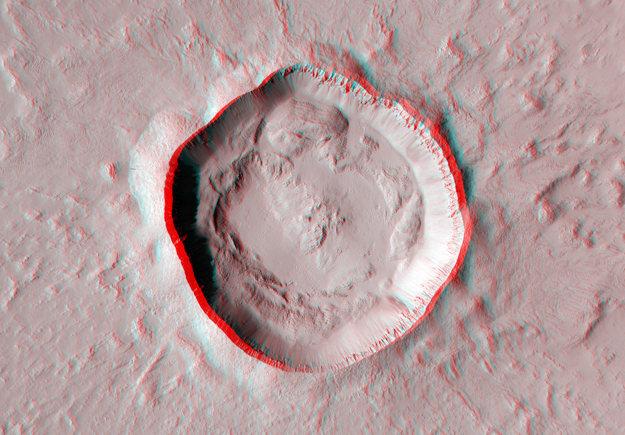Linking Martian Craters With Subsurface Water

Researchers from Western University have discovered further evidence linking subsurface volatiles, such as water or ice, to previously recognized (but thought to be rare) pits, which commonly arise on the floors of Martian impact craters.
Investigating extremely detailed images of Mars produced by the High Resolution Imaging Science Experiment (HiRISE) camera (http://hirise.lpl.arizona.edu/) – the largest ever carried on a deep space mission.
Images and other supporting materials can be found at: http://communications.uwo.ca/media/marscrater/
Livio Tornabene, an adjunct research professor in Western’s Department of Earth Sciences and an investigator at the Centre for Planetary Science and Exploration (http://cpsx.uwo.ca/), says deciphering the origin of these pits assists planetary geologists like he and CPSX Acting Director Gordon Osinski in understanding how impact craters affect the hydrological and climatic history of Mars.
The pits range from a few meters to three kilometres in diameter and are observed in more than 200 well-preserved Martian craters, which range from one to 150 kilometres in diameter. The pits possess only slightly raised rims and no sign of definable ejecta deposits around them, which would normally result from smaller impacts of heavenly debris and thus make them distinguishable from other common Martian features. Their attributes and occurrence in Martian craters of all sizes and the range of preservation suggests that the phenomena may have formed throughout Mars’ geologic history.
“These images present evidence that there is a connection between volatiles like water and ice in the subsurface of Mars and the impact process,” explains Tornabene, a former HiRISE operator and ongoing member of its science team. “A meteor impact obviously delivers a lot of energy and heat to the surface of Mars, so if you have frozen water present underground then heat delivered by the impact is going to react with it.”
Tornabene adds that one of the difficulties with studying Mars’ surface is that while it’s not as geographically active as Earth, it still has some activity.
“Unlike the moon, it’s hard to prove if craters on Mars formed the phenomenon or did they come later as a consequence of other geologic processes that occurred after the impact crater formed,” says Tornabene, noting the closest comparison to these pits on Earth form when lava interacts with groundwater or icy substrates.
“Widespread crater-related pitted materials on Mars: Further evidence for the role of target volatiles during the impact process” (http://www.sciencedirect.com/science/article/pii/S0019103512002047) is featured in the August 2012 issue of Icarus.
MEDIA CONTACT: Jeff Renaud, Senior Media Relations Officer, 519-661-2111, ext. 85165
ABOUT WESTERN
Western delivers an academic experience second to none. Since 1878, The Western Experience has combined academic excellence with life-long opportunities for intellectual, social and cultural growth in order to better serve our communities. Our research excellence expands knowledge and drives discovery with real-world application. Western attracts individuals with a broad worldview, seeking to study, influence and lead in the international community.








